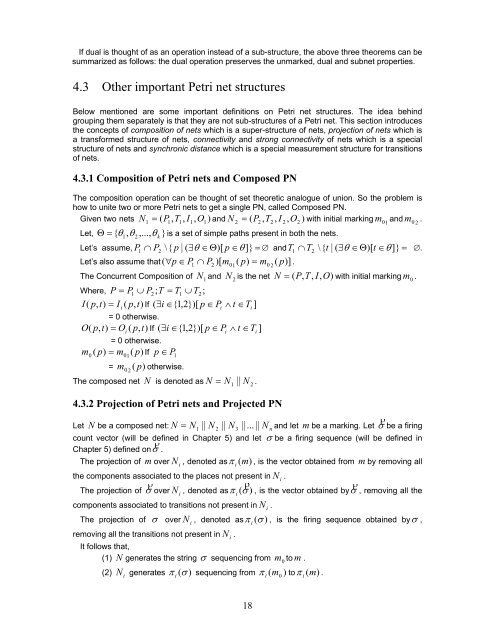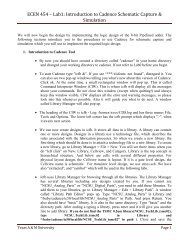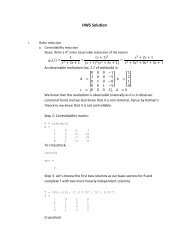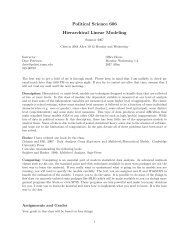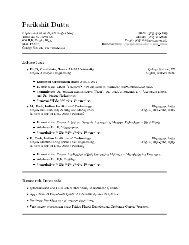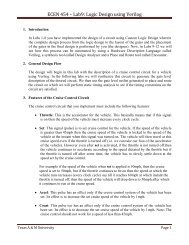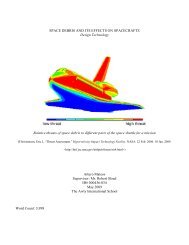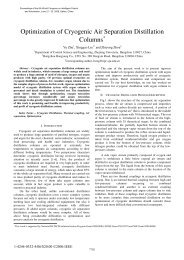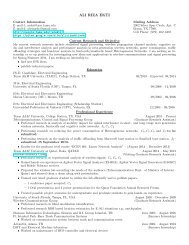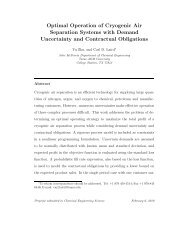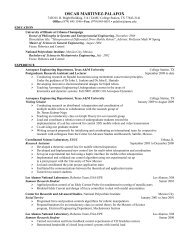A Study of Petri Nets: Modeling, Analysis and Simulation - Tamu.edu
A Study of Petri Nets: Modeling, Analysis and Simulation - Tamu.edu
A Study of Petri Nets: Modeling, Analysis and Simulation - Tamu.edu
Create successful ePaper yourself
Turn your PDF publications into a flip-book with our unique Google optimized e-Paper software.
If dual is thought <strong>of</strong> as an operation instead <strong>of</strong> a sub-structure, the above three theorems can be<br />
summarized as follows: the dual operation preserves the unmarked, dual <strong>and</strong> subnet properties.<br />
4.3 Other important <strong>Petri</strong> net structures<br />
Below mentioned are some important definitions on <strong>Petri</strong> net structures. The idea behind<br />
grouping them separately is that they are not sub-structures <strong>of</strong> a <strong>Petri</strong> net. This section introduces<br />
the concepts <strong>of</strong> composition <strong>of</strong> nets which is a super-structure <strong>of</strong> nets, projection <strong>of</strong> nets which is<br />
a transformed structure <strong>of</strong> nets, connectivity <strong>and</strong> strong connectivity <strong>of</strong> nets which is a special<br />
structure <strong>of</strong> nets <strong>and</strong> synchronic distance which is a special measurement structure for transitions<br />
<strong>of</strong> nets.<br />
4.3.1 Composition <strong>of</strong> <strong>Petri</strong> nets <strong>and</strong> Composed PN<br />
The composition operation can be thought <strong>of</strong> set theoretic analogue <strong>of</strong> union. So the problem is<br />
how to unite two or more <strong>Petri</strong> nets to get a single PN, called Composed PN.<br />
Given two nets N<br />
1<br />
= ( P1<br />
, T1<br />
, I1,<br />
O1<br />
) <strong>and</strong> N<br />
2<br />
= ( P2<br />
, T2<br />
, I<br />
2<br />
, O2<br />
) with initial marking m0<br />
<strong>and</strong> m<br />
1 0<br />
.<br />
2<br />
Let, Θ = { θ1,<br />
θ<br />
2<br />
,..., θ<br />
k<br />
} is a set <strong>of</strong> simple paths present in both the nets.<br />
Let’s assume, P1 ∩ P2<br />
\ { p | ( ∃θ<br />
∈ Θ)[<br />
p ∈θ<br />
]} = ∅ <strong>and</strong> T<br />
1<br />
∩ T2<br />
\ { t | ( ∃θ<br />
∈ Θ)[<br />
t ∈θ<br />
]} = ∅.<br />
Let’s also assume that ( ∀ p ∈ P1 ∩ P2<br />
)[ m ( p)<br />
= m0<br />
( p)]<br />
.<br />
01<br />
2<br />
The Concurrent Composition <strong>of</strong> N1<br />
<strong>and</strong> N<br />
2<br />
is the net N = ( P,<br />
T,<br />
I,<br />
O)<br />
with initial marking m 0<br />
.<br />
Where, P = P ∪ P T = T ∪ ;<br />
1 2; 1<br />
T2<br />
, ) ( ∃ i ∈{1,2})[<br />
p ∈ Pi<br />
∧ t ∈Ti<br />
I( p,<br />
t)<br />
= I ( p t If ]<br />
i<br />
= 0 otherwise.<br />
O( p,<br />
t)<br />
= O ( p,<br />
t)<br />
If ∃ i ∈{1,2})[<br />
p ∈ P ∧ t ∈T<br />
]<br />
i<br />
(<br />
i<br />
i<br />
= 0 otherwise.<br />
m<br />
0<br />
( p)<br />
= m0<br />
( p)<br />
If p ∈ P<br />
1<br />
1<br />
= m ( 0<br />
p)<br />
otherwise.<br />
2<br />
The composed net N is denoted as N = N || N 1 2<br />
.<br />
4.3.2 Projection <strong>of</strong> <strong>Petri</strong> nets <strong>and</strong> Projected PN<br />
Let N be a composed net: N = N1<br />
|| N<br />
2<br />
|| N<br />
3<br />
|| ... || N<br />
n<br />
<strong>and</strong> let m be a marking. Let ρ σ be a firing<br />
count vector (will be defined in Chapter 5) <strong>and</strong> let σ be a firing sequence (will be defined in<br />
Chapter 5) defined onσ ρ .<br />
The projection <strong>of</strong> m over N , denoted as π (m)<br />
, is the vector obtained from m by removing all<br />
i<br />
the components associated to the places not present in N .<br />
The projection <strong>of</strong> ρ σ over N , denoted as π (σ<br />
ρ )<br />
i<br />
i<br />
i<br />
, is the vector obtained byσ ρ , removing all the<br />
components associated to transitions not present in N<br />
i<br />
.<br />
The projection <strong>of</strong> σ over N<br />
i<br />
, denoted as π i<br />
(σ ) , is the firing sequence obtained byσ ,<br />
removing all the transitions not present in N .<br />
It follows that,<br />
(1) N generates the string σ sequencing from m0<br />
to m .<br />
N generates π i<br />
(σ ) sequencing from π m ) to (m)<br />
(2)<br />
i<br />
i<br />
i<br />
i<br />
(<br />
0<br />
π .<br />
i<br />
18


